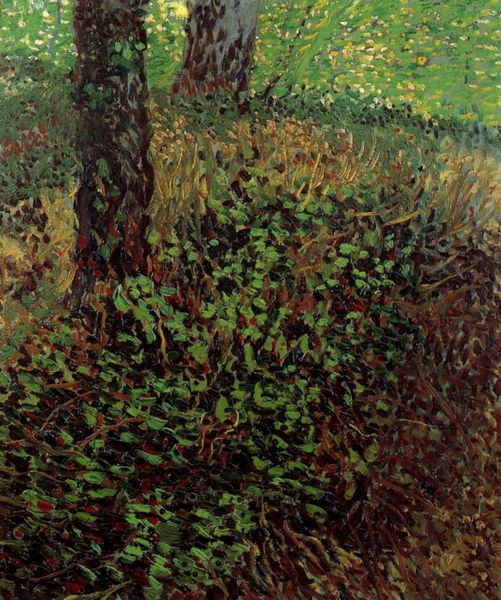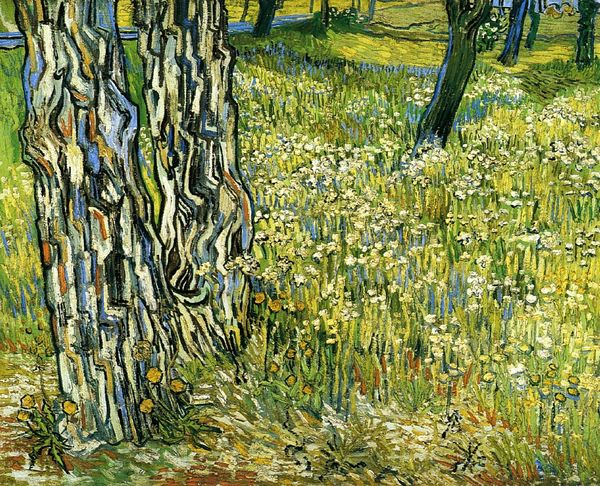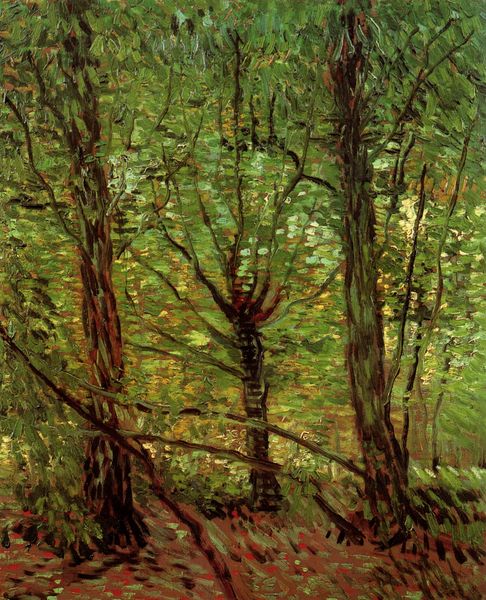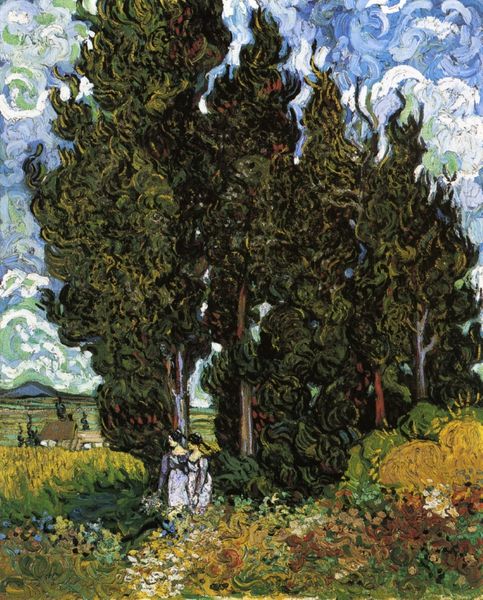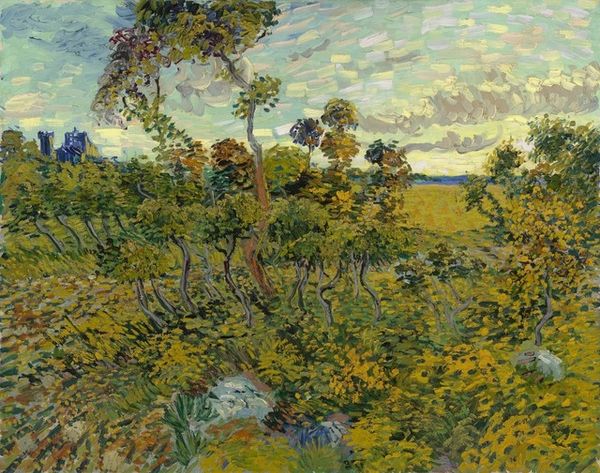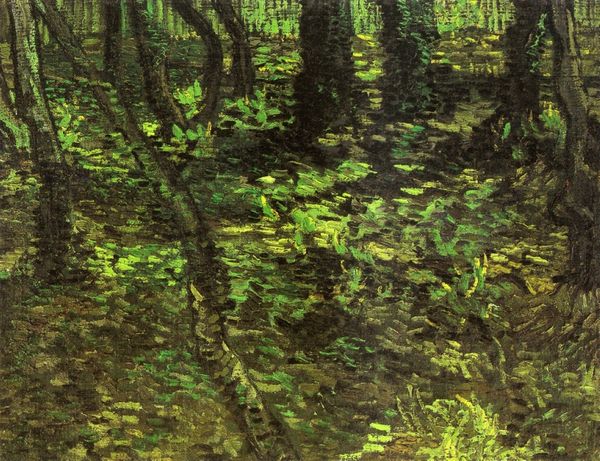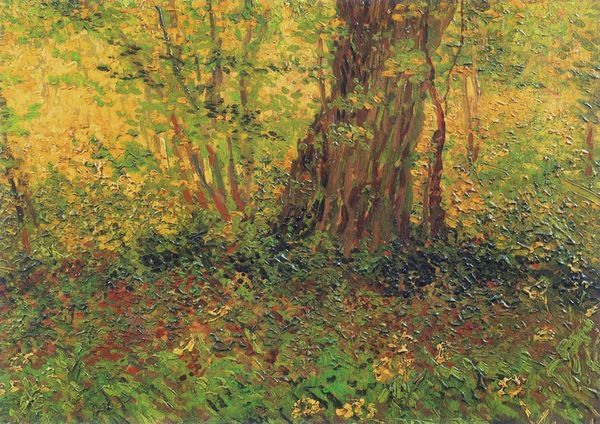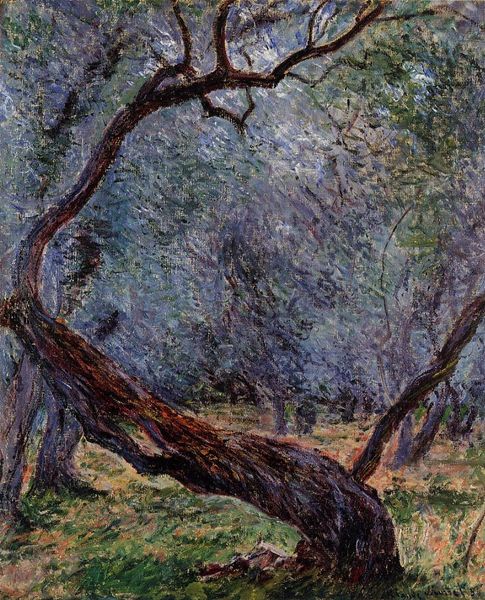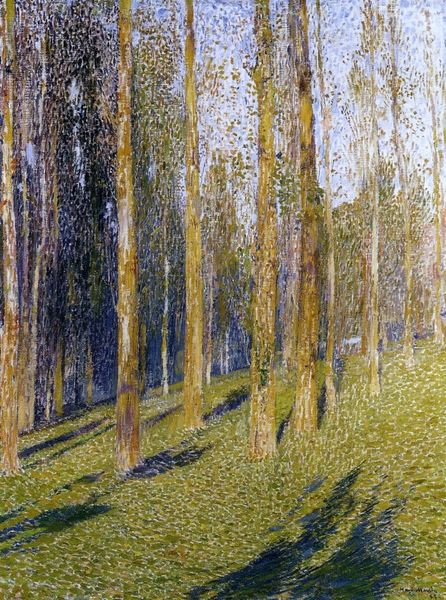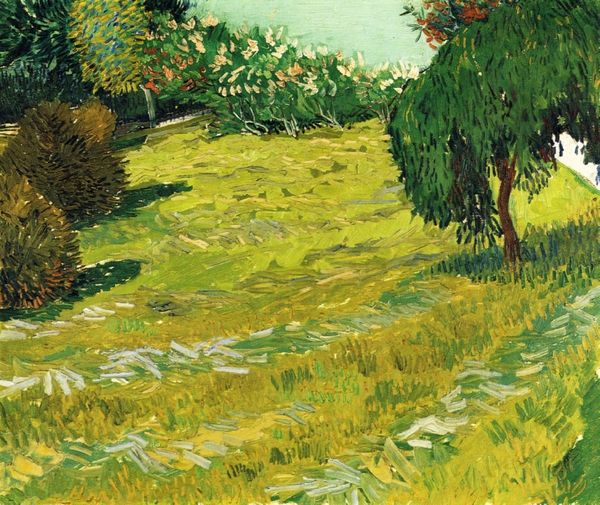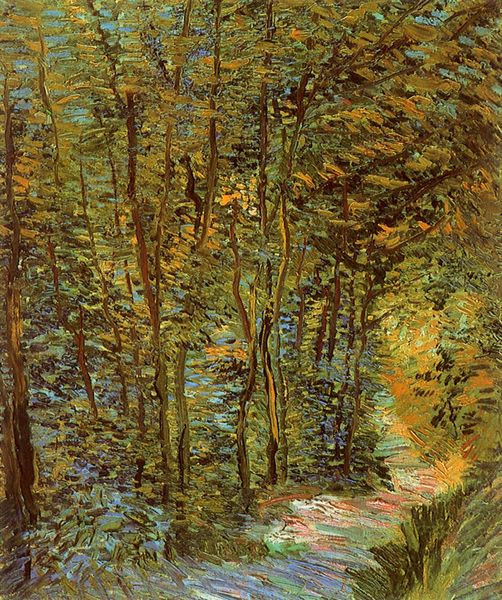
painting, oil-paint
#
painting
#
impressionism
#
oil-paint
#
landscape
#
impressionist landscape
#
nature
#
form
#
line
#
post-impressionism
#
realism
Copyright: Public Domain: Artvee
Curator: This is “Undergrowth”, an oil painting by Vincent van Gogh. The textures! Look at how he layers the paint. My first impression is just layers, rough, and deeply textural. It feels almost like an invitation to touch. Art Historian: Absolutely. What strikes me immediately is how it encapsulates Van Gogh's turbulent relationship with nature and his emotional state towards the end of his life. These scenes of forests held particular resonance in the artistic and social imagination of the late 19th century, symbolizing both refuge and the sublime. Curator: Refuge makes sense. The sheer materiality shouts his engagement with the natural world – that impasto technique wasn’t just an aesthetic choice. The way he works with oil paints in "Undergrowth" surely must’ve been influenced by its availability, ease of application, but how much do we know of what pigments he uses here, and what his intentions would have been to work with this particular palette of colour? It begs to examine how different paint qualities influence that affect and form this kind of reception, it is more than representational... it's physical. Art Historian: You are spot on with materiality. Van Gogh painted many undergrowth scenes toward the end of his career and life. This was during his time in Saint-Remy. During this time he did face his challenges while confined to the asylum which naturally also brings a change to the way art was being produced during this phase of his life. Curator: True, what I notice is that we’re looking straight down into a patch of land where this undergrowth would’ve spread out and expanded – there’s something fascinating about getting that bird’s-eye view which seems to suggest even further its availability and resources but also almost invites the artist or viewer alike to delve within that field itself! He is trying to come to grips with an experience of a lived encounter to that kind of labour and relationship with material and landscape. Art Historian: It definitely places the viewer directly within nature. But beyond a snapshot of natural beauty, remember Van Gogh’s struggles. These dark undertones in his paintings were products of psychological strife amidst evolving views toward mental health that informed much artistic license back then as galleries pushed post-impressionism in increasingly marketable directions post-impressionism in the late nineteenth century... this context cannot go unnoticed even within an immersive composition such as this. Curator: Absolutely. Thank you for bringing that vital context to our encounter and exchange to understanding the kind of pressures van Gogh could have been facing especially given gallery culture. In any case what strikes me even stronger after considering all that more now through “Undergrowth”, this isn’t only documentation – this is material engagement transmuted through oil paints themselves through physical contact. Art Historian: Indeed. Hopefully this brief look encourages all those listening now that as the landscape shifts so does any narrative embedded both around and from within artworks just this very one presented for us here!
Comments
No comments
Be the first to comment and join the conversation on the ultimate creative platform.
